
[xyz-ihs snippet="NavigationLinksBlock-Common"]
Song To The Evening Star
(O Du, Mein Holder Abendstern)
by Richard Wagner
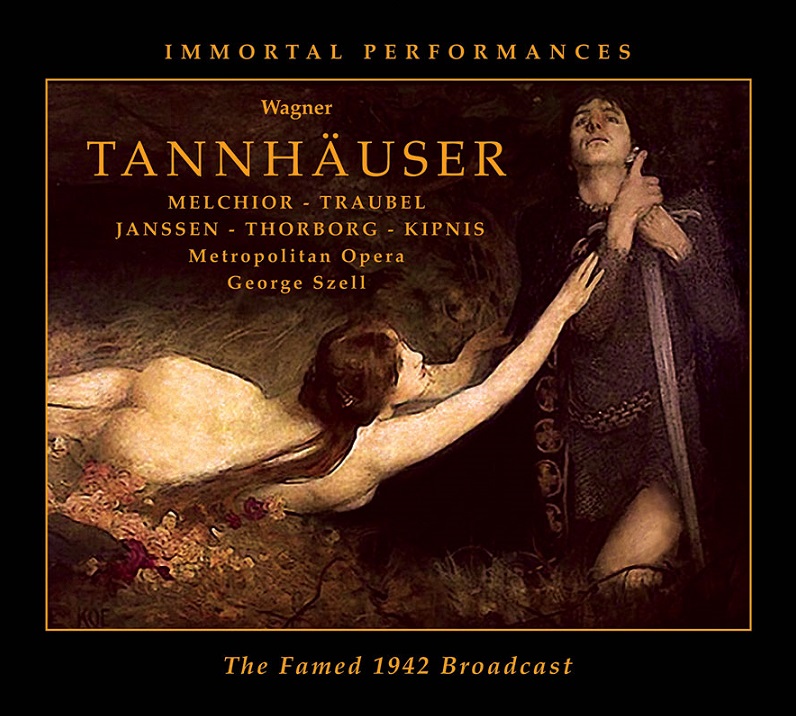
" Song To The Evening Star " ("O du, mein holder Abendstern") is an aria sung by the character Wolfram (baritone) in the third act of Richard Wagner's 1845 opera Tannhäuser. Wolfram’s aria is a pretty magical moment in Wagner’s Tannhäuser. It’s almost a stand-alone song within the opera, the minstrel having a musical soliloquy, and it feels much gentler, much more intimate than everything that has come before. Wolfram is singing to the evening star, thinking of Elizabeth and her sad love for Tannhäuser.
[video width="640" height="360" mp4="https://www.easypianoonline.com/wp-content/uploads/2020/12/SongToTheEveningStar.mp4"]
Lyrics
(English – Translation)
Wolfram:
Dusk covers the land like a premonition of death,
Wraps the valley in her dark mantle;
The soul that longs for those heights
Dreads to take its dark and awful flight.
Then you appear, O loveliest of stars,
And shed your gentle light from afar;
Your sweet glow cleaves the twilight gloom,
And as a friend you show the way out of the valley.
O you, my fair evening star,
Gladly have I always greeted you:
Greet her, from the depths of this heart,
Which has never betrayed her,
Greet her, when she passes,
When she soars above this mortal vale
To become a holy angel there!
Songwriters: Richard Wagner
Song To The Evening Star (O Du, Mein Holder Abendstern)
(German – Original)
Wolfram:
Dusk covers the land like a premonition of death,
Wraps the valley in her dark mantle;
The soul that longs for those heights
Dreads to take its dark and awful flight.
Then you appear, O loveliest of stars,
And shed your gentle light from afar;
Your sweet glow cleaves the twilight gloom,
And as a friend you show the way out of the valley.
O you, my fair evening star,
Gladly have I always greeted you:
Greet her, from the depths of this heart,
Which has never betrayed her,
Greet her, when she passes,
When she soars above this mortal vale
To become a holy angel there!
Songwriters: Richard Wagner

Playlist of Tutorials for Songs from Mendelssohn, Felix (List Ordered by Song Name) A B C D E F G H I J K L…

[xyz-ihs snippet="NavigationLinksBlock-Common"]
On Wings Of Song
(Auf Flugeln Des Gesanges)
by Felix Mendelssohn
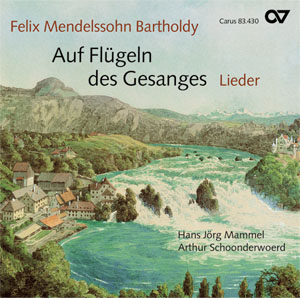
" On Wings Of Song " (German: "Auf Flügeln des Gesanges") is a piece by Felix Mendelssohn, the second of his "six songs for voice and piano" (Opus 34-2, 1834). It is a setting of the poem Auf Flügeln des Gesanges by the German Romantic poet Heinrich Heine published in his Buch der Lieder in 1827. Franz Liszt arranged On Wings of Song for solo piano (S. 547). This song has been translated into other languages and has been adopted in school music textbooks for China, Japan and Korea.
[video width="640" height="360" mp4="https://www.easypianoonline.com/wp-content/uploads/2020/12/OnWingsOfSong.mp4"]
Lyrics
(English – Translation)
On Wings of Song
Sweetheart, I carry you away
Away to the fields of the Ganges
Where I know the most beautiful place
There is a garden of red flax
In the quiet moonlight
Expect the lotus flowers
Their charming little sister
The violets giggle and cherish
And gaze up at the stars
Secretly tell the roses
Are fragrant fairy ear
Hopping near and listen
the pious, wise gazelles
And noise in the distance
The sacred river's waves
There we will lay down
Under the palm tree
Peace and love and drink
And dream our blissful dream
Songwriters: Felix Mendelssohn / Heinrich Heine
Auf Flugeln Des Gesanges
(German – Original)
Auf Flügeln des Gesanges
Herzliebchen, trag' ich dich fort
Fort nach den Fluren des Ganges
Dort weiß ich den schönsten Ort
Dort liegt ein rotblühender Garten
Im stillen Mondenschein
Die Lotosblumen erwarten
Ihr trautes Schwesterlein
Die Veilchen kichern und kosen
Und schaun nach den Sternen empor
Heimlich erzählen die Rosen
Sich duftende Märchen ins Ohr
Es hüpfen herbei und lauschen
Die frommen, klugen Gazell'n
Und in der Ferne rauschen
Des heiligen Stromes Well'n
Dort wollen wir niedersinken
Unter dem Palmenbaum
Und Liebe und Ruhe trinken
Und träumen seligen Traum
Songwriters: Felix Mendelssohn / Heinrich Heine

[xyz-ihs snippet="NavigationLinksBlock-Common"]
Non Piu Andrai
(Figaro’s Aria)
by W. A. Mozart
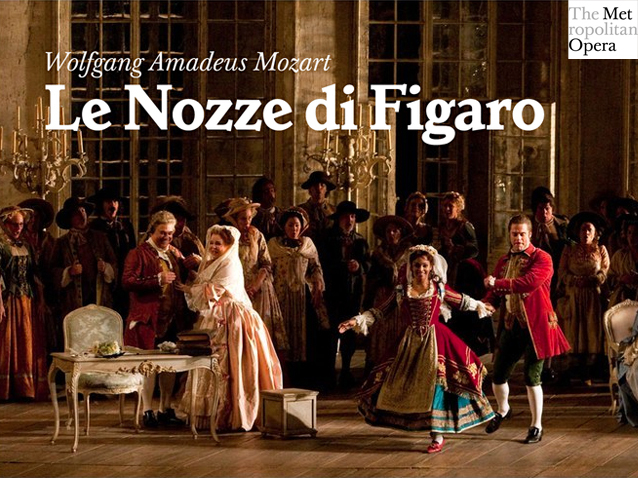
" Non Piu Andrai " (You shall go no more) is an aria for bass from Mozart's 1786 opera Le Nozze di Figaro (The Marriage of Figaro), K. 492. The Italian libretto was written by Lorenzo Da Ponte based on a stage comedy by Pierre Beaumarchais, La folle journée, ou le Mariage de Figaro (1784). It is sung by Figaro at the end of the first act. In this aria, Figaro teases Cherubino about his Spartan military future, in stark contrast with the pleasant and flirtatious life he has enjoyed in the Count's palace.
[video width="640" height="360" mp4="https://www.easypianoonline.com/wp-content/uploads/2020/12/NonPiuAndrai.mp4"]
Lyrics
(English – Translation)
You won't go any more, amorous butterfly,
Fluttering around inside night and day
Disturbing the sleep of beauties,
A little Narcissus and Adonis of love.
You won't have those fine feathers any more,
That light and jaunty hat,
That hair, that shining aspect,
That womanish red color [in your face]!
Among soldiers, by Bacchus!
A huge moustache, a little knapsack,
Gun on your back, sword at your side,
Your neck straight, your nose exposed,
A big helmet, or a big turban,
A lot of honour, very little pay.
And in place of the dance
A march through the mud.
Over mountains, through valleys,
With snow, and heat-stroke,
To the music of trumpets,
Of bombards, and of cannons,
Which, at every boom,
Will make bullets whistle past your ear.
Cherubino, go to victory!
To military glory!
Songwriters: W.A. Mozart
Non Piu Andrai (You Will Not Go Anymore)
(Italian – Original)
Non più andrai, farfallone amoroso,
Notte e giorno d'intorno girando,
Delle belle turbando il riposo,
Narcisetto, Adoncino d'amor.
Delle belle turbando il riposo,
Narcisetto, Adoncino d'amor.
Non piu avrai questi bei penacchini,
Quel cappello leggiero e galante,
Quella chioma, quell'aria brillante,
Quel vermiglio donnesco color!
Quel vermiglio donnes color!
Non piu avrai quei penacchini,
Quel cappello
Quella chioma, quell'aria brillante
Non più andrai, farfallone amoroso,
Notte e giorno d'intorno girando,
Delle belle turbando il riposo,
Narcisetto, Adoncino d'amor.
Delle belle turbando il riposo,
Narcisetto, Adoncino d'amor.
Fra guerrieri, poffar Bacco!
Gran mustacchi, stretto sacco,
Schioppo in spalla, sciabla al fianco,
Collo dritto, muso franco, Un gran casco, o un gran turbante,
Molto onor, poco contante.
Poco contante
Poco contante
Ed in vece del fandango
Una marcia per il fango.
Per montagne, per valloni,
Con le nevi, e i solioni,
Al concerto di tromboni,
Di bombarde, di cannoni,
Che le palle in tutti i tuoni,
All'orecchio fan fischiar.
Non piu avrai quei penacchini,
Non piu avrai quel cappello
Non piu avrai quella chioma
Non piu avrai quell'aria brillante.
Non più andrai, farfallone amoroso,
Notte e giorno d'intorno girando,
Delle belle turbando il riposo,
Narcisetto, Adoncino d'amor.
Delle belle turbando il riposo,
Narcisetto, Adoncino d'amor.
Cherubino, alla vittoria!
Alla gloria militar!
Cherubino, alla vittoria!
Alla gloria militar!
Alla gloria militar!
Alla gloria militar!
Songwriters: W.A. Mozart

[xyz-ihs snippet="NavigationLinksBlock-Common"]
Golden Slumbers
by The Beatles
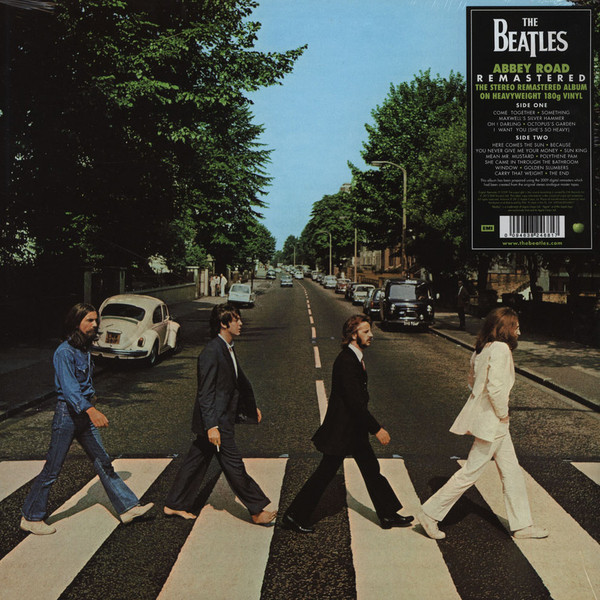
" Golden Slumbers " is a song by the English rock band the Beatles from their 1969 album Abbey Road. Written by Paul McCartney and credited to Lennon–McCartney, it is the sixth song of the album's climactic B-side medley. The song is followed by "Carry That Weight" and begins the progression that leads to the end of the album. The two songs were recorded together as a single piece, and both contain strings and brass arranged and scored by producer George Martin.
"Golden Slumbers" is based on the poem "Cradle Song" from the play Patient Grissel, a lullaby by the dramatist Thomas Dekker. McCartney saw sheet music for "Cradle Song" at his father's home in Liverpool, left on a piano by his stepsister Ruth. Unable to read music, he created his own music. McCartney uses the first stanza of the original poem, with minor word changes, adding to it a single lyric line repeated with minor variation.
[video width="640" height="360" mp4="https://www.easypianoonline.com/wp-content/uploads/2020/12/GoldenSlumbers.mp4"]
Lyrics
Once there was a way
To get back homeward
Once there was a way
To get back home
Sleep, pretty darling, do not cry
And I will sing a lullaby
Golden slumbers fill your eyes
Smiles await you when you rise
Sleep pretty darling, do not cry
And I will sing a lullaby
Once there was a way
To get back homeward
Once there was a way
To get back home
Sleep, pretty darling, do not cry
And I will sing a lullaby
Songwriters: John Lennon / Paul Mccartney

[xyz-ihs snippet="NavigationLinksBlock-Common"]
Gnossienne No. 3
by Erik Satie
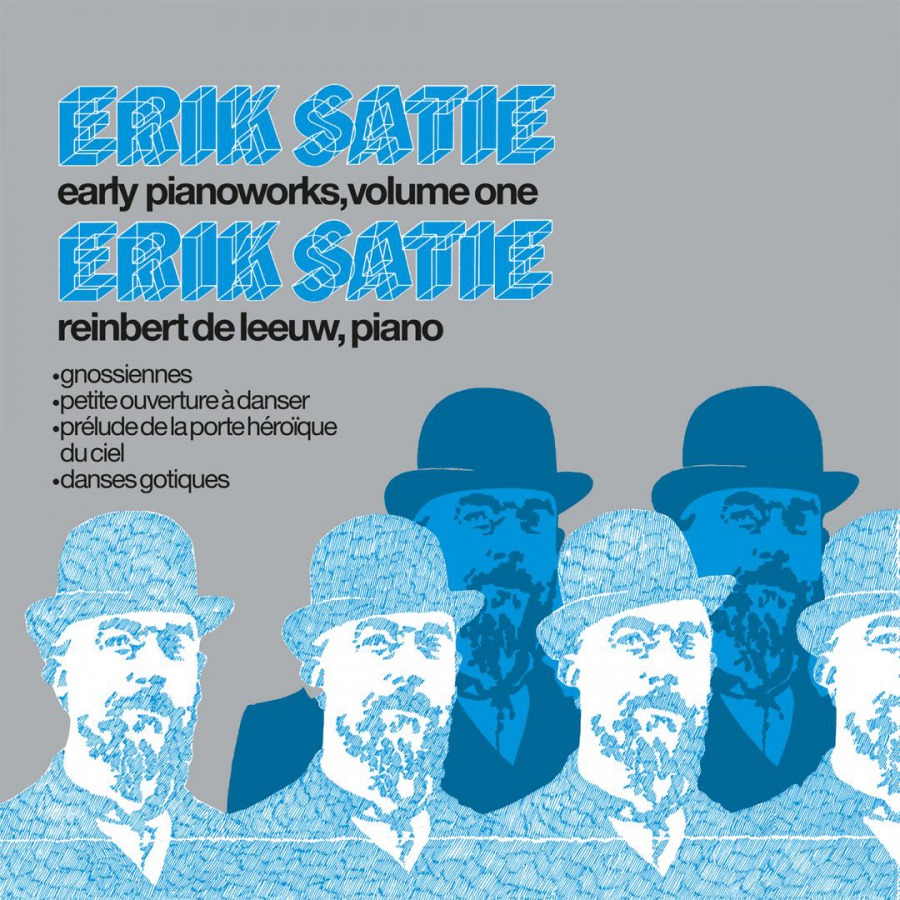
" Gnossienne No. 3 " is one of the Gnossiennes. The Gnossiennes are several piano compositions written by the French composer Erik Satie in the late 19th century. The works are for the most part in free time (lacking time signatures or bar divisions) and highly experimental with form, rhythm and chordal structure. The form as well as the term was invented by Satie. Satie's coining of the word gnossienne was one of the rare occasions when a composer used a new term to indicate a new "type" of composition. Satie used many novel names for his compositions (vexations, croquis et agaceries and so on). Ogive, for example, is the name of an architectural element which was used by Satie as the name for a composition, the Ogives. Gnossienne, however, was a word that did not exist before Satie used it as a title for a composition. The word appears to derive from gnosis. Satie was involved in gnostic sects and movements at the time that he began to compose the Gnossiennes. However, some published versions claim that the word derives from Cretan "knossos" or "gnossus"; this interpretation supports the theory linking the Gnossiennes to the myth of Theseus, Ariadne and the Minotaur. Several archeological sites relating to that theme were famously excavated around the time that Satie composed the Gnossiennes.
[video width="640" height="360" mp4="https://www.easypianoonline.com/wp-content/uploads/2020/12/GnossienneNo3.mp4"]

[xyz-ihs snippet="NavigationLinksBlock-Common"]
Always On My Mind
by Elvis Presley
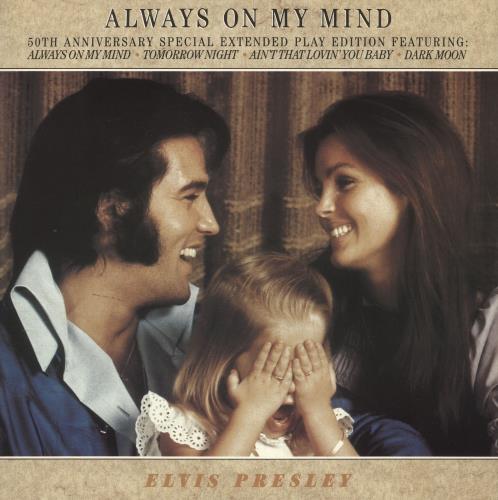
" Always On My Mind " is a ballad song written by Wayne Carson, Johnny Christopher and Mark James. The song has been a crossover hit, charting in both the country and western and pop categories, and AllMusic lists over 300 recorded releases of the song in versions by dozens of performers, including notably Brenda Lee in 1972, Elvis Presley in that same year, John Wesley Ryles in 1979, Willie Nelson's Grammy Award-winning version in 1982 and Pet Shop Boys in 1987.
[video width="640" height="360" mp4="https://www.easypianoonline.com/wp-content/uploads/2020/12/AlwaysOnMyMind.mp4"]
Lyrics
Always On My Mind
Quite as good as I should have
Maybe I didn't love you
Quite as often as I could have
Little things I should have said and done
I just never took the time
You were always on my mind
(You were always on my mind)
You were always on my mind
Maybe I didn't hold you
All those lonely, lonely times
And I guess I never told you
I'm so happy that you're mine
If I make you feel second best
Girl, I'm so sorry I was blind
You were always on my mind
(You were always on my mind)
You were always on my mind
Tell me
Tell me that your sweet love hasn't died
Give me
Give me one more chance
To keep you satisfied, satisfied
Little things I should have said and done
I just never took the time
You were always on my mind
(You were always on my mind)
You were always on my mind
You were always on my mind
Maybe I didn't treat you
Quite as good as I should have
Maybe I didn't love you
Quite as often as I could have
Maybe I didn't hold you
All those lonely, lonely times
And I guess I never told you
I'm so happy that you're mine
Maybe I didn't treat you
Quite as good as I should have
Songwriters: Johnny Christopher / Mark James / Wayne C. Thompson

[xyz-ihs snippet="NavigationLinksBlock-Common"]
You'll Be In My Heart
by Phil Collins

" You’ll Be In My Heart " is a song by Phil Collins, from the 1999 Disney animated feature Tarzan. It appeared on Tarzan: An Original Walt Disney Records Soundtrack as well as various other Disney compilations. A version of the single performed by him with Glenn Close also appears on the soundtrack.
A demo version with Collins playing piano and singing is featured as a bonus on the 2-DVD Special Edition of Tarzan, along with "I Will Follow", "Celebration", "6/8 Demo" and "Rhythm Piece" which became "Strangers Like Me", "Son of Man" and "Trashin' the Camp". "6/8 Demo" was not featured in the movie.
The music video for the song was directed by Kevin Godley. Phil Collins also recorded the song in French ("Toujours dans mon cœur"), German ("Dir gehört mein Herz"), Italian ("Sei dentro me") and Spanish ("En mi corazón vivirás") aside from his native English.
[video width="640" height="360" mp4="https://www.easypianoonline.com/wp-content/uploads/2020/12/YoullBeInMyHeart.mp4"]
Lyrics
You’ll Be In My Heart
It will be alright
Just take my hand
Hold it tight
I will protect you
From all around you
I will be here
Don't you cry
For one so small
You seem so strong
My arms will hold you
Keep you safe and warm
This bond between us
Can't be broken
I will be here
Don't you cry
'Cause you'll be in my heart
Yes, you'll be in my heart
From this day on
Now and forever more
You'll be in my heart
No matter what they say
You'll be here in my heart, always
Why can't they understand the way we feel?
They just don't trust what they can't explain
I know we're different but deep inside us
We're not that different at all
And you'll be in my heart
Yes, you'll be in my heart
From this day on
Now and forever more
Don't listen to them
'Cause what do they know? (What do they know?)
We need each other
To have, to hold
They'll see in time
I know
When destiny calls you
You must be strong (you gotta be strong)
I may not be with you
But you've got to hold on
They'll see in time
I know
We'll show them together
'Cause you'll be in my heart
Believe me you'll be in my heart
I'll be there from this day on
Now and forever more
Ooh, you'll be in my heart (you'll be here in my heart)
No matter what they say (I'll be with you)
You'll be here in my heart (I'll be there), always
Always
I'll be with you
And I'll be there for you always
Always and always
Just look over your shoulder
Just look over your shoulder
Just look over your shoulder
I'll be there always
Songwriters: Phillip David Charles Collins

[xyz-ihs snippet="NavigationLinksBlock-Common"]
Therru's Song
by Hiroko Taniyama
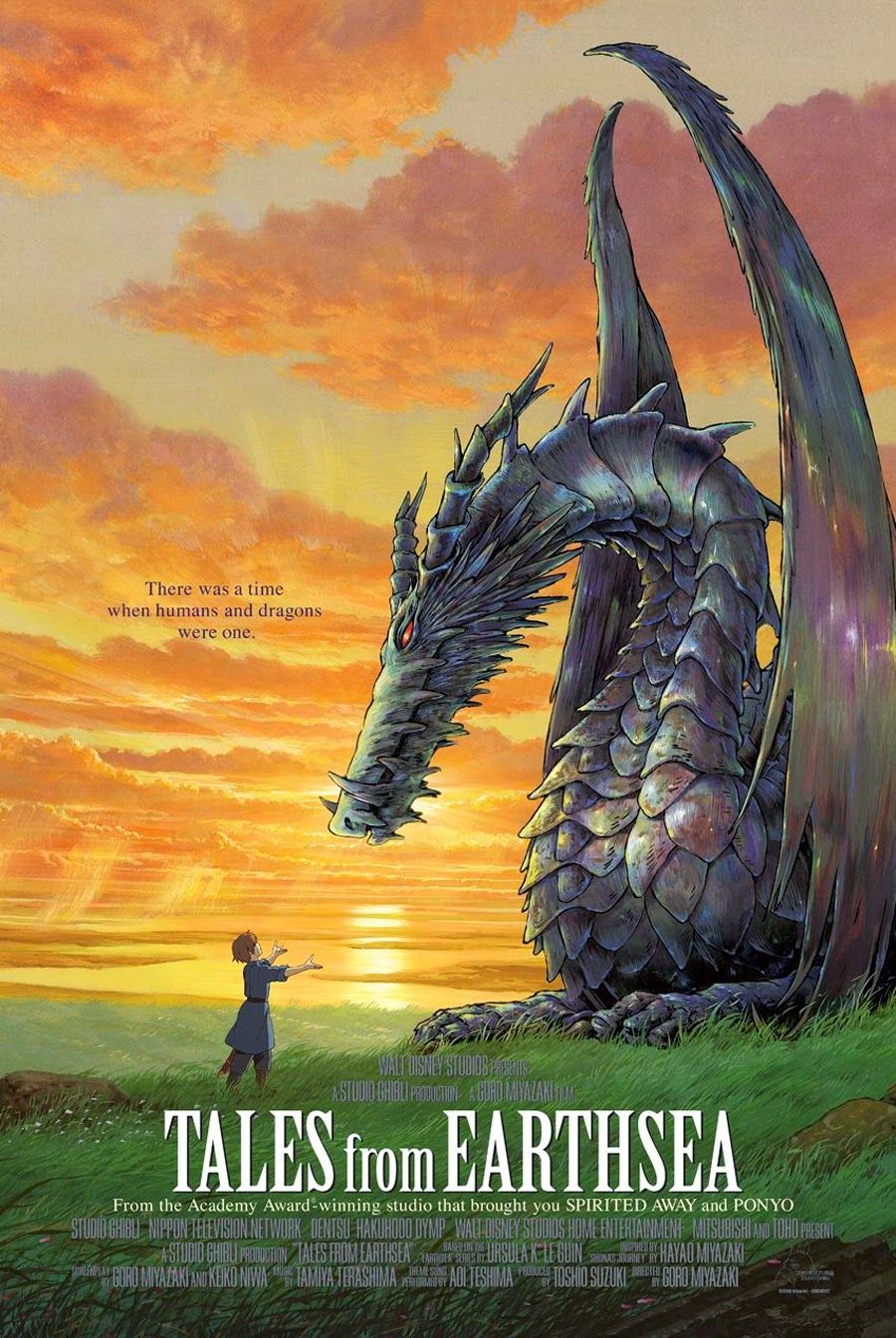
" Therru’s Song " Is a song from the animated movie Tales from Earthsea. Tales from Earthsea (Japanese: ゲド戦記, Hepburn: Gedo Senki, literally "Ged's War Chronicles") is a 2006 Japanese animated fantasy film directed by Gorō Miyazaki, animated by Studio Ghibli for the Nippon Television Network, Dentsu, Hakuhodo DY Media Partners, Walt Disney Studios Home Entertainment, Mitsubishi and Toho, and distributed by the latter company. The film is based on a combination of plot and character elements from the first four books of Ursula K. Le Guin's Earthsea series (A Wizard of Earthsea, The Tombs of Atuan, The Farthest Shore, and Tehanu). The film's title is named from the collection of short stories, Tales from Earthsea, made in 2001. The plot was "entirely different" according to the author Ursula K. Le Guin, who told director Gorō Miyazaki, "It is not my book. It is your movie. It is a good movie", although she later expressed her disappointment with the end result. A film comic adaptation of the film has been published in Japan.
[video width="640" height="360" mp4="https://www.easypianoonline.com/wp-content/uploads/2020/12/TherrusSong.mp4"]
Lyrics
Therru’s Song
(English – Translation)
a falcon flies alone, silent as the sky,
i hear his lonely cry,
never can he rest,
i walk with you along a empty winding road,
we’re far from the ones we love, and never can return,
never can we see again, the countries of our birth,
when will i ever find a place to call my home?
sadness circling like a falcon in the sky,
when will i ever find a way to speak my heart,
to someone who knows, what it is to be alone?
far, far above the clouds against the setting sun,
a falcon flies alone silent as the sky,
i hear his lonely cry, never can he rest,
i long to spread my wings and fly into the light,
open this lonely heart to one who understands,
when will i ever find, a way to speak my heart?
when will i ever find a place to call my home?
sadness and loneliness, a falcon in the sky,
when will i ever find a way to speak my heart,
to someone who knows, what it is to be alone?
Songwriters: Hiroko Taniyama
(Romaji – Original)
Yuuyami semaru kumo no ue
Itsumo ichiwa de tondeiru
Taka wa kitto kanashikarou
Oto mo todaeta kaze no naka
Sora wo tsukanda sono tsubasa
Yasumeru koto wa dekinakute
Kokoro wo nani ni tatoeyou
Taka no youna kono kokoro
Kokoro wo nani ni tatoeyou
Sora wo mau yona samishisa wo
Ame no sobofuru iwakage ni
Itsumo chiisaku saiteiru
Hana wa kitto setsunakarou
Iro mo kasunda ame no naka
Usu momoiro no hanabira wo
Medetekureru te mo nakute
Kokoro wo nani ni tatoeyou
Hana no youna kono kokoro
Kokoro wo nani ni tatoeyou
Ame ni utareru setsunasa wo
Hitokage taeta no no michi wo
Watashi to tomo ni ayunderu
Anata mo kitto samishikarou
Mushi no sasayaku kusahara wo
Tomo ni michiyuku hito dakedo
Taete monoiu koto mo naku
Kokoro wo nani ni tatoeyou
Hitori michiyuku kono kokoro
Kokoro wo nani ni tatoeyou
Hitoribocchi no samishisa wo
Songwriters: Hiroko Taniyama

[xyz-ihs snippet="NavigationLinksBlock-Common"]
Loch Lomond
(Scottish Traditional)
<
" Loch Lomond " is a well-known traditional Scottish song (Roud No. 9598) first published in 1841 in Vocal Melodies of Scotland. The song prominently features Loch Lomond, the largest Scottish loch, located between the council areas of West Dunbartonshire, Stirling and Argyll and Bute. In Scots, "bonnie" means "pretty", often in reference to a female.The original composer is unknown, as is definitive information on any traditional lyrics.
[video width="640" height="360" mp4="https://www.easypianoonline.com/wp-content/uploads/2020/12/LochLomond.mp4"]
Lyrics
Loch Lomond
Where the sun shines bright on Loch Lomond
Where we two have passed so many blithesome days
On the bonnie, bonnie banks of Loch Lomond
O ye'll take the high road and I'll take the low road
And I'll be in Scotland afore ye
But me and my true love will never meet again
On the bonnie, bonnie banks of Loch Lomond
I mind where we parted on yon shady glen
On the steep, steep side o' Ben Lomond
Where in purple hue, the Heiland hills we view
And the moon shinin' out from the gloamin'
O ye'll take the high road and I'll take the low road
And I'll be in Scotland afore ye
But me and my true love will never meet again
On the bonnie, bonnie banks of Loch Lomond
The wee bird may sing and the wild flowers spring
And in sunshine the waters are sleeping:
The broken heart will ken nae second spring again
And the world does not know how we're grievin'
O ye'll take the high road and I'll take the low road
And I'll be in Scotland afore ye
But me and my true love will never meet again
On the bonnie, bonnie banks of Loch Lomond
Songwriters: Traditional

[xyz-ihs snippet="NavigationLinksBlock-Common"]
Kyrie Eleison (Mass No.12)
by Mozart
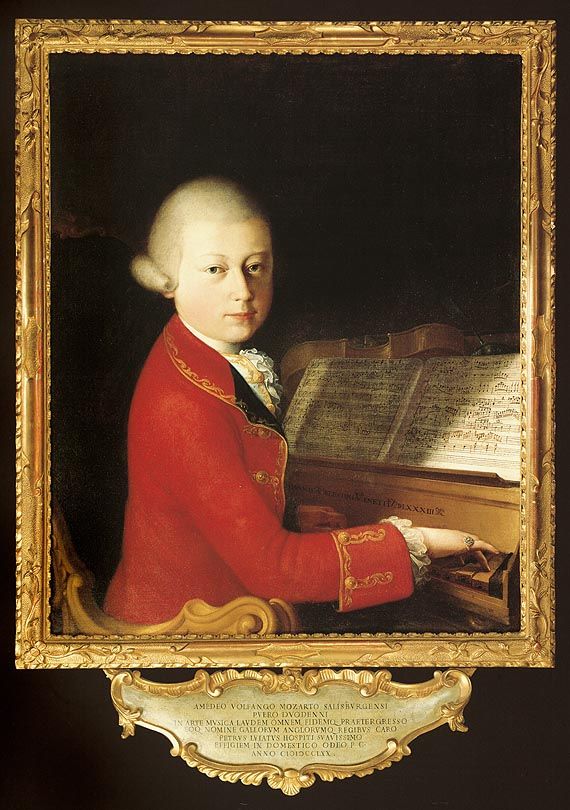
" Kyrie Eleison " is a section of Mozart's Twelfth Mass, a commonly used title for a setting of the mass formerly attributed to Wolfgang Amadeus Mozart. Under this title, which was given to it by an English publisher, the piece attained great popularity in the 19th century and contributed to Mozart’s reputation. Today the piece is generally attributed to Wenzel Müller. The key signature of the mass is G major, although apart from the opening Kyrie the mass appears to be in C. This suggests that it may be put together from movements not originally intended for the same composition, maybe even from different composers.
Köchel rejected the attribution to Mozart in the Anhang (appendix) of the first edition of his catalogue of Mozart's works, there listed as K. Anh. 232, and in later editions as K. Anh. C1.04.
[video width="640" height="360" mp4="https://www.easypianoonline.com/wp-content/uploads/2020/12/KyrieEleison.mp4"]

[xyz-ihs snippet="NavigationLinksBlock-Common"]
Gnossienne No.1
by Erik Satie
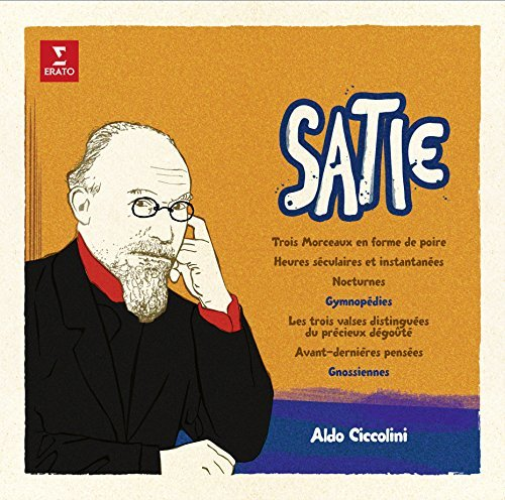
" Gnossienne No.1 " is one of the Gnossiennes. The Gnossiennes are several piano compositions written by the French composer Erik Satie in the late 19th century. The works are for the most part in free time (lacking time signatures or bar divisions) and highly experimental with form, rhythm and chordal structure. The form as well as the term was invented by Satie. Satie's coining of the word gnossienne was one of the rare occasions when a composer used a new term to indicate a new "type" of composition. Satie used many novel names for his compositions (vexations, croquis et agaceries and so on). Ogive, for example, is the name of an architectural element which was used by Satie as the name for a composition, the Ogives. Gnossienne, however, was a word that did not exist before Satie used it as a title for a composition. The word appears to derive from gnosis. Satie was involved in gnostic sects and movements at the time that he began to compose the Gnossiennes. However, some published versions claim that the word derives from Cretan "knossos" or "gnossus"; this interpretation supports the theory linking the Gnossiennes to the myth of Theseus, Ariadne and the Minotaur. Several archeological sites relating to that theme were famously excavated around the time that Satie composed the Gnossiennes.
[video width="640" height="360" mp4="https://www.easypianoonline.com/wp-content/uploads/2020/12/GnossienneNo1.mp4"]

[xyz-ihs snippet="NavigationLinksBlock-Common"]
Beyond The Sea
by Charles Trenet
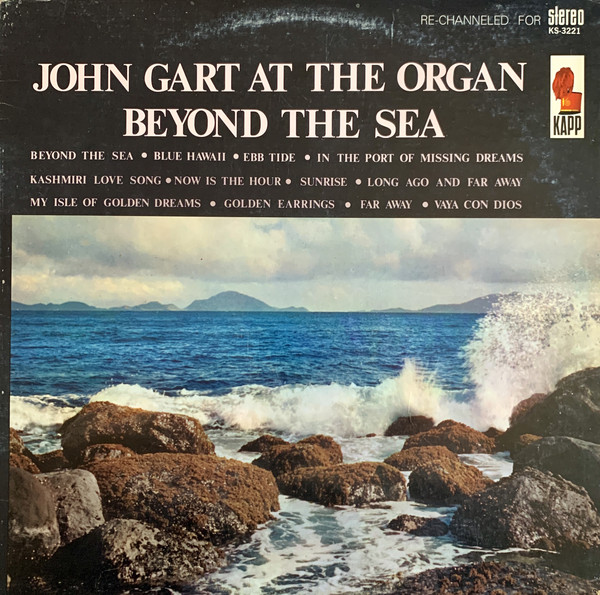
" Beyond The Sea " is a 1945 contemporary pop romantic love song by Jack Lawrence, with music taken from the song "La Mer" by Charles Trenet.Trenet had composed "La Mer" (which means "the Sea") with French lyrics. It had some differences to the English-language version that Lawrence later wrote. Trenet's French version was a homage and ode to the changing moods of the sea, while Lawrence, by just adding one word "Beyond" to the title, gave him the start whereby he made the song into a love song.
English version[video width="640" height="360" mp4="https://www.easypianoonline.com/wp-content/uploads/2020/12/BeyondTheSea.mp4"]
French version[video width="640" height="360" mp4="https://www.easypianoonline.com/wp-content/uploads/2020/12/LaMer-FrenchBeyondTheSea.mp4"]
Lyrics
Beyond The Sea
(English version)
Somewhere waiting for me
My lover stands on golden sands
And watches the ships that go sailing
Somewhere beyond the sea
She's there watching for me
If I could fly like birds on high
Then straight to her arms I'd go sailing
It's far beyond a star
It's near beyond the moon
I know beyond a doubt
My heart will lead me there soon
We'll meet beyond the shore
We'll kiss just like before
Happy we'll be beyond the sea
And never again I'll go sailing
I know beyond a doubt
My heart will lead me there soon
And we'll meet, I know we'll meet beyond the shore
We'll kiss just as before
Happy we'll be beyond the sea
And never again I'll go sailing
No more sailing
So long, sailing, sailing, sailing
Goodbye, farewell, my friend, no more sailing
So long, sailing, no more sailing
No more, farewell
Auf Wiedersehen to you
No more sailing
No more
Oh, no more sailing
No more, no more
No more sailing
No more, one more time
No more sailing
Songwriters: Charles Trenet / Jack Lawrence
La Mer
(French – Original)
La mer
Qu'on voit danser le long des golfes clairs
A des reflets d'argent
La mer
Des reflets changeants
Sous la pluie
La mer
Au ciel d'été confond
Ses blancs moutons
Avec les anges si purs
La mer
Bergère d'azur
Infinie
Voyez
Près des étangs
Ces grands roseaux mouillés
Voyez
Ces oiseaux blancs
Et ces maisons rouillées
La mer
Les a bercés
Le long des golfes clairs
Et d'une chanson d'amour
La mer
A bercé mon cœur pour la vie
La mer
Qu'on voit danser le long des golfes clairs
A des reflets d'argent
La mer
Des reflets changeants
Sous la pluie
La mer
Au ciel d'été confond
Ses blancs moutons
Avec les anges si purs
La mer
Bergère d'azur
Infinie
Voyez (voyez)
Près des étangs (près des étangs)
Des grands roseaux mouillés (voyez des roseaux)
Voyez (voyez)
Ces oiseaux blancs (ces oiseaux blancs)
Et ces maisons rouillées
La mer
Les a bercés
Le long des golfes clairs
Et d'une chanson d'amour
La mer
A bercé mon cœur pour la vie
Songwriters: Charles Trenet

Playlist of Tutorials for Songs from Presley, Elvis (List Ordered by Song Name) A B C D E F G H I J K L…

[xyz-ihs snippet="NavigationLinksBlock-1"]
Blue Christmas
by Billy Hayes and Jay Johnson
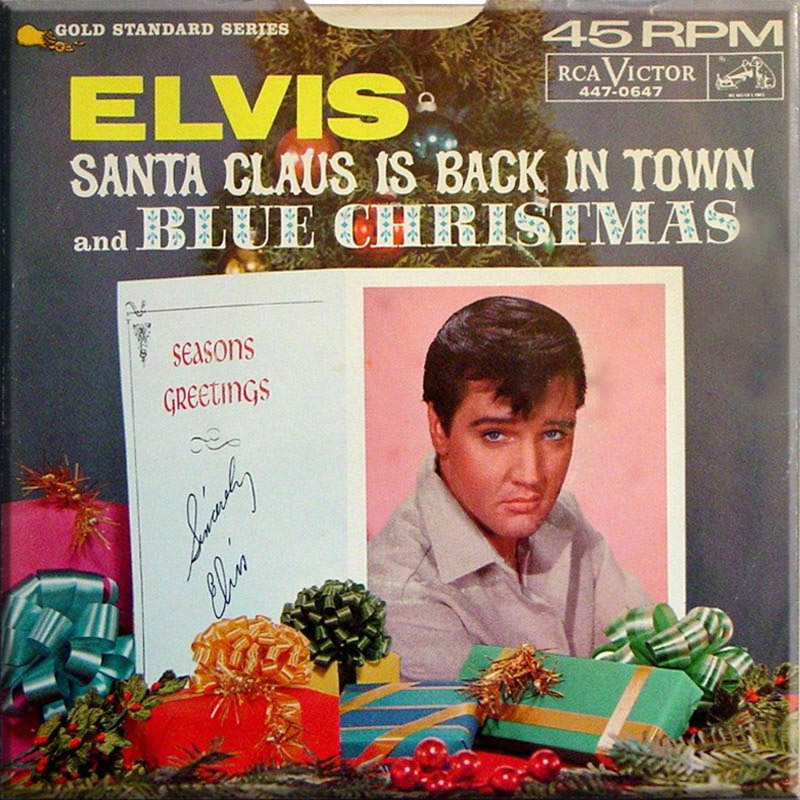
" Blue Christmas " is a Christmas song written by Billy Hayes and Jay W. Johnson and most famously performed by Elvis Presley; it was first recorded by Doye O'Dell in 1948. It is a tale of unrequited love during the holidays and is a longstanding staple of Christmas music, especially in the country genre.
[video width="640" height="360" mp4="https://www.easypianoonline.com/wp-content/uploads/2020/12/BlueChristmas.mp4"]
Lyrics
Blue Christmas
I'll be so blue just thinking about you
Decorations of red on a green Christmas tree
Won't be the same, dear, if you're not here with me
And when those blue snowflakes start falling
That's when those blue memories start calling
You'll be doin' all right with your Christmas of white
But I'll have a blue, blue, blue, blue Christmas
You'll be doin' all right with your Christmas of white
But I'll have a blue, blue, blue, blue Christmas
Songwriters: Johnson Jay W / Hayes Billy







































